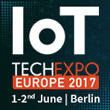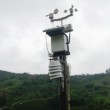

The Internet of Things has already infiltrated the consumer market with every day smart products, such as your thermostat, remote control and alarm system. (more…)
January 2, 2017
Posted by: Avadhoot Patil

We’re all aware of the benefits of IoT, and how it is set to make tasks quicker and easier. But these intuitively connected cars, fridges and utility devices haven’t really gone mainstream yet, and they won’t until an Internet of Things (IoT) standard is introduced. (more…)
December 30, 2016
Posted by: Avadhoot Patil

2016 has been a busy year for telecoms operators in the Internet of Things (IoT) market, most notably in low-power, wide-area (LPWA) technologies as narrowband IoT (NB-IoT) and LTE-M (long-term evolution to 4G, machine to machine) approach full commercial deployment. (more…)
December 28, 2016
Posted by: Avadhoot Patil

According to a new research report from the Gothenburg, Sweden-based analyst firm, Berg Insight, mobile operator revenues from the Internet of Things (IoT) reached € 11 billion(US$ 11.42 billion) in 2016. (more…)
December 23, 2016
Posted by: Avadhoot Patil

2016 has been a busy year for telecoms operators in the IoT market, most notably in low-power, wide-area (LPWA) technologies as NB-IoT and LTE-M approach full commercial deployment. (more…)
December 21, 2016
Posted by: Avadhoot Patil

In partnership with Sensor City, Stream Technologies will be bringing Liverpool to the Internet of Things with the deployment of the LoRaWAN™ low power wide area network technology. (more…)
December 15, 2016
Posted by: Avadhoot Patil

Event date: November 29-30, 2017
Santa Clara Convention Center, Silicon Valley
Leading Internet of Things conference & exhibition will be arriving in Silicon Valley on November 29-30th for its 2nd annual event where it will host two days of top level content and discussion, introducing and exploring the latest innovations in the Internet of Things arena. (more…)
December 14, 2016
Posted by: IoT global network

Event date: June 1 – 2, 2017
Berlin
Europe’s leading IoT conference, the IoT Tech Expo will be arriving in Estrel Berlin on 1-2nd June for its 2nd annual event where it will host two days of top level content and discussion, introducing and exploring the latest innovations in the Internet of Things arena. (more…)
Posted by: IoT global network

New data from Juniper Research has found that the number of connected IoT (Internet of Things) devices, sensors and actuators will reach over 46 billion in 2021. (more…)
December 13, 2016
Posted by: Avadhoot Patil

Smart Farming has become the main trend in Agriculture sector. According to the FAO by 2050 food production may increase a 70% to feed 9.6 billion people. (more…)
December 12, 2016
Posted by: Avadhoot Patil